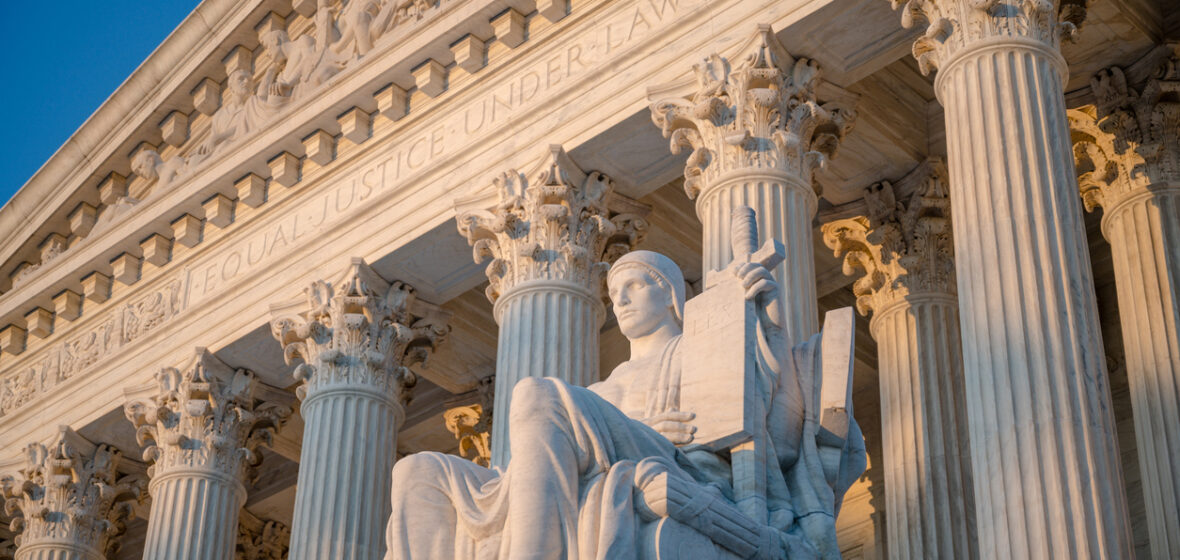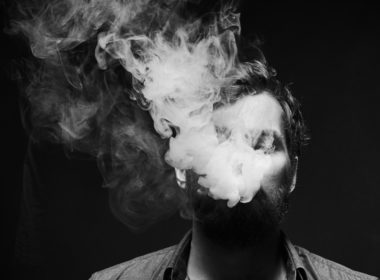The role of lawyers and media in criticising the judiciary is a contentious one in Australia and other democratic nations. The consequences of doing so are dependent on the manner in which this criticism is expressed, the content of it, and the perceived effect on the carriage of justice.
Sometimes, the consequences of criticising a judge are not imposed in penalties by the judicial system, but through a scathing public attack in the political arena. This was recently on display when well-known US podcast host, Professor of Law at University of Pennsylvania Carey Law School, Kate Shaw was giving testimony to the Senate Judiciary Committee on 3 June.
Professor Shaw was the Democrats’ witness on the panel in front of two subcommittees: Subcommittee on the Federal Courts, Oversight, Agency Action and Federal Rights and Subcommittee on the Constitution, present for the hearing: “The Supposedly ‘Least Dangerous Branch’: District Judges v. Trump”.
In her testimony, Shaw defended federal judges, though the focus of her presence was her fiery interaction with Louisiana’s Republican Senator John Neely Kennedy, during which Kennedy demanded Shaw explain a past podcast episode of Strict Scrutiny in which she jokingly referred to Supreme Court Justice Elena Kagan’s Supreme Court colleagues as “evil”.
“Which justices were you talking about?” Kennedy fumed. Shaw claimed that she did not recall the comment and considered it unlikely that she made it: “Sir, I’m very sceptical. If there’s a transcription, it was probably a transcription error. I do not think I said that.”
Kennedy demanded: “No, you said it. Why don’t you own up to it?”
Shaw responded that she has been “very critical of some members of the Supreme Court”, which did not quell Kennedy’s ire. This resulted in his infuriated response: “[Y]ou’re an officer of the court, and you’re here advising us to be respectful of federal judges? And you say there are evil members of the United States Supreme Court? Gag me with a spoon! You’re part of what’s the problem in all of this.”
Kennedy consequently posted a video of his questioning on X, interspersed with video clips of Shaw using the “evil colleagues” phrase on her podcast.
Shaw committed to ‘Strict Scrutiny’
Shaw tells LSJ Online, “Back in April, I actually testified on a similar topic – the Trump Administration’s string of losses in federal court — before the House Judiciary Committee, and a few members asked me about prior statements in op-eds or speeches. Of course, I’ve been asked about my academic writing, but until this Senate hearing, no one had ever asked me about snippets of dialogue from the podcast I co-host, Strict Scrutiny. We’re now six years into a podcast that has been weekly for most of that time, so we’re talking about many thousands of hours of conversation.”
The event, Shaw says, “certainly caused me to give more thought to how I’ll respond when asked about the podcast in the future. And it has made me think more carefully about word choice. But I certainly don’t think I’ll change my substantive critique in any way.”
She says one of the best features of the U.S. Constitution “is the robust protections it provides for the freedom of speech. By default, speech is protected from censorship or punishment by the government. There are only a handful of exceptions to that general principle, and criticising judges certainly isn’t one of them. And it’s important that we do criticise judges. They’re part of our constitutional order just like presidents and members of Congress, and they can be criticized just as those other actors can be.”
With an increasing number of lawyers taking to Tik Tok, YouTube, and podcast platforms to opine, explain and inform the public, Shaw warns that while they may be vulnerable to attack in their professional life, that should not stop them.
“I hope that doesn’t cause anyone either to pull back on critique, or to decline invitations to testify. Even with Kennedy’s attacks, I was able to use the platform to make points about what I view as this Administration’s lawlessness, and I’m grateful for the opportunity to do that,” she said.
Scandalising the court: the landscape in Australia
There are measures in Australia to address unsubstantiated claims about judges, enabling fines and jail time for “scandalising the court”. But several justices and academics have argued that it is appropriate for media and lawyers to criticise judicial performance within a democracy, including former Supreme Court of NSW Chief Justice Tom Bathurst in 2019, and Dr Bill Swannie, a member of the Human Rights Committee of the Law Institute of Victoria.
In 1987, the Australian Law Reform Commission recommended the principles relating to contempt of court laws be replaced by statutory provisions. However, nationwide contempt of court laws are not crystal clear on what conduct is deemed punishable.
Considering how many lawyers host podcasts, YouTube channels, or Instagram and Tik Tok series in which they apply their knowledge to headline issues or make comment on public decisions, it is a dangerous precedent to punish a lawyer for comments they’ve made via these outlets, especially if those comments are made in jest.
Per the Judicial Commission of NSW Criminal Trial Courts Bench Book, “Scandalising the court refers to conduct which denigrates judges or the court so as to undermine public confidence in the administration of justice”.
“Under modern conditions, the jurisdiction of the court to deal with contempt which consists of scandalising the court will be exercised only in exceptional cases, because ordinarily the good sense of the community is a sufficient safeguard in curbing undue and improper criticisms of judges. An exceptional case might be where a letter is published alleging against a judge that his judgment in a case contained a malicious attack upon the character of one of the parties and that there was an ulterior motive behind such attack: Attorney-General Ex p; Re Goodwin.”
The most renowned Australian High Court decision regarding scandalising centred upon a newspaper article that satirised the High Court’s rulings relating to immigration policy in the 1930s. The High Court held that this scandalised the court.
The writer of the article suggested the High Court had put the Immigration Restriction Act into a state of “suspended animation… the law which was relied upon to keep Australia white.” This suspension, the writer proposed, was “to the horror of everybody except the Little Brothers of the Soviet and kindred intelligentsia.”
Associate Professor Daniel Joyce, School of Global & Public Law at UNSW, tells LSJ Online: “Scandalising contempt exists as a mechanism for the courts to regulate publications which undermine the integrity of and public confidence in the administration of justice. This differs from sub judice contempt which aims to protect a particular matter before the court.”
“There can sometimes be overlap between the categories. There is a clear public interest in the protection of the administration of justice involved with contempt law, but there are concerns about how best to balance this interest with the need for members of the public to be able to offer fair criticism of the courts.
He adds, “The tension involved in balancing systemic protection with freedom of expression has been acknowledged in the Australian case law with Justice Dixon reflecting: ‘It is important that Courts should be the subject of free criticism. It is equally important that the dignity and authority of the Courts should be maintained. It is the reconciliation of those two principles that involves the difficulty.’ (R v Dunbabin; Ex Parte Williams (1935) 53 CLR 434) There is a defence of fair comment available and there may also be a defence of justification, though that is less clear. There is also potential for the implied freedom of political communication to further shape scandalising contempt.”
Joyce points out that reform has occurred in other jurisdictions, such as the UK, where the common law offence of scandalising the court was abolished. Actions that were previously considered contempt of court by scandalising the judiciary are no longer prosecutable under that specific charge. The Crime and Courts Act 2013 officially abolished the offence in England and Wales, and similar measures were taken in Northern Ireland in the interests of free speech.
In addition to scandalising contempt there are important ethical and professional conduct constraints involved for lawyers when addressing the court and in criticising particular judges, Joyce explains.
“Key duties include the duty to the court, including the administration of justice. There is also the opportunity to formally raise bias or apparent bias in relation to a matter where there are concerns about a particular judge’s involvement,” he says.
“Furthermore, a judge may have recourse to defamation law as any natural person may, where there has been damage to their personal reputation. Scandalising contempt is not concerned with the protection of such individual judicial reputation. The defences of absolute and qualified privilege may come into play depending on the facts of any case.”
Contempt ‘beyond reasonable doubt’
Last year, LSJ Online published an explainer on the different definitions and approaches the US and Australia take to contempt of court. Justin Wong, Principal Lawyer at Streeton Lawyers, explained it is “a broad concept, and can include what is sometimes called contempt in the face of the court, contempt by publication or sub judice contempt, breaching an order or undertaking, or interfering with witnesses.”
A person who is found to be in contempt of court must be proven beyond a reasonable doubt to be deliberate, as Wong explained, adding that in Australia, contumacious contempt is the most severe case. As LSJ Online reported, “this involves wilful contempt in defiance of the court, a conscious defiance of the authority of the court, or a case where the behaviour of the contemnor has been shown to be aimed at the integrity of the courts and designed to degrade the administration of justice.”
Unlike in Australia, serious criminal – rather than civil – contempt cases in the US enable the contemnor the right to a trial by jury. In Australia, cases are usually brought within the civil jurisdiction of the court and penalties typically range from fines to imprisonment. The question remains: how can legislators tread a fine line between free speech and respect for the carriage of justice?
In 2003, Oyiela Litaba wrote Does the ‘Offence’ of Contempt by Scandalising the Court Have a Valid Place in the Law of Modern Day Australia?
She put forward a number of reasons for abolishing the offence of scandalising the court, including its potential as a political tool to silence critics, the necessity of ensuring democratic participation in the administration of justice, and the upholding of human rights and individual liberty.
Litaba concluded “for a law that may lead to severe punishment, there is still too much unpredictability as to how this contempt may be proved or defended. If ‘a serious case of scandalising a court would certainly be liable to extend beyond imprisonment for 12 months’, clearer guidelines are needed. This is particularly so, given that it remains possible for the case to be heard by the very judge whose impartiality or standing is said to be impugned.”




